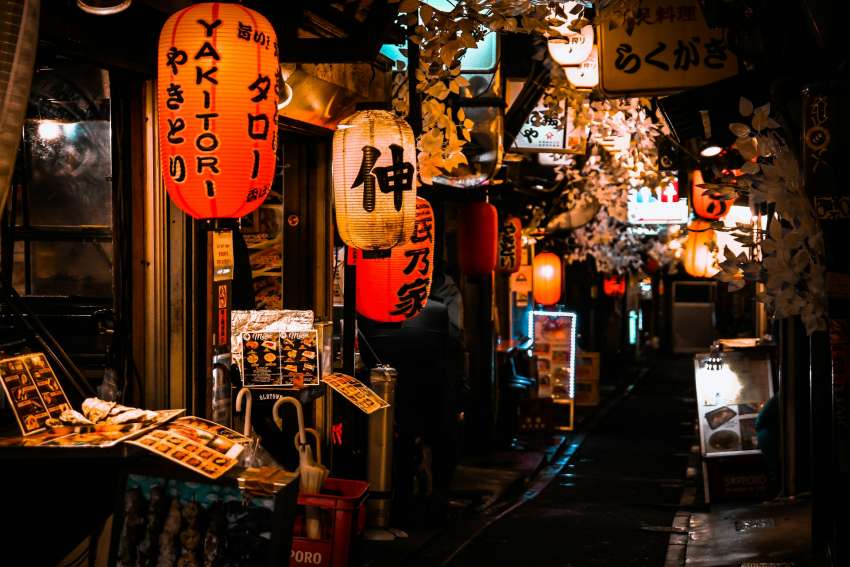 Photo by Pema Lama on Unsplash
Photo by Pema Lama on Unsplash
I've not quite finished section one, unit two - these are my notes so far (to help me to remember what I'm learning). I'll update this article with any additional words and phrases when I complete the unit.
I'm still enjoying Japanese but it's very early in the course so that may be because I'm still on the easy stuff. 😅
Although I try to do at least one Duolingo lesson a day, I find I'm more motivated and retain more if I do between three and five lessons a day (including the character learning lessons). Rewatching Midnight Diner episodes helps too - hearing the language is encouraging as I'm starting to recognise words, even now (おいしい oishii (tasty), for example).
Unit 2 has been about introducing myself and ordering food and drink which, even though I barely know any Japanese at this point, seems an odd combination. It's a little disappointing that the food has been western dishes such as pizza, cake, and (perhaps less western), curry.
Unit 2 of the Duolingo Japanese course introduced:
- how to introduce yourself
- how to address someone
- how to say hello, good evening, goodbye and see you tomorrow
- how to tell someone that you're pleased to meet them
- how to say this and that
- how to ask a question with the ka particle
- a first introduction to words that use katakana characters for foreign loan-words such as curry, cake, and pizza
New Words in Unit 2
| Hiragana | Romaji | English meaning |
|---|---|---|
| こんにちは | konnichiwa | Hello |
| こんばんは | konbanwa | Good evening |
| またあした | mataashita | See you tomorrow |
| じゃあね | jaane | Goodbye / See you later |
| どうぞよろしく | douzoyoroshiku | Nice/good/pleased to meet you |
Food (in Katakana)
| Katakana | Romaji | English meaning |
|---|---|---|
| ピザ | Piza | Pizza |
| カレー | Karee | Curry |
| ケーキ | Kekii | Cake |
| ラーメン | Ramen | Ramen (noodles) |
Other words (in Hiragana)
| Hiragana | Romaji | English meaning | My notes |
|---|---|---|---|
| はい | hai | yes | |
| いいえ | iie | no | |
| おいしい | oishii | tasty | |
| これは | kore wa | This is | Note 1 |
| それは | sore wa | That is | Note 1 |
Example phrases from Unit 2
| English | Hiragana / Romaji | My notes |
|---|---|---|
| Hello, Naomi | なおみ さん こんにちは naomi san, konnichiwa | |
| Good evening, I'm Hana | こんばんわは はな です konbanwa hana desu | |
| Nice to meet you, Hana | はな さん どうぞよろしく hana san douzoyoroshiku | |
| See you later / goodbye | じゃあね jaane | |
| Goodbye, Ken | けんさん じゃあね ken san jaane | |
| See you tomorrow | またあした ma ta a shi ta | |
| Bye, see you tomorrow. | じゃあね、またあした。jaane mataashita | |
| Bye Naomi | なおみ さん じゃあね naomi san jaane | |
| See you tomorrow Hana | はん さん またあした Hana san mataashita | |
| Is that tasty? | それはおいしいですか。sore wa oishii desu | |
| Yes, this is tasty. | はい、 これはおいしいです。hai, kore wa oishii desu | Note 2 |
Some notes on material learned in unit 2
Note 1 : The は ha topic particle (pronounced as "wa")
When a word is followed by the は ha character on its own, that word becomes the topic of the sentence, and the rest of the sentence is talking about that word. When the topic particle is used, although it's the "ha" character in hiragana, it's pronounced as, "wa".
こんにちは konnichiwa and こんばんは konbanwa are spelled with the "ha" は character at the end instead of "wa" わ because historically, the greeting used to be "Konichi wa (today is)" and "Konban wa (tonight is)", where the today or night were the topics of the sentence and the wa is the topic particle.
When the japanese government reviewed the spelling rules after the war, they formalised the greeting as one word (merging the particle into the word), but they retained the "ha" spelling at the end.
Note 2 : Punctuation in Japanese
Japanese still uses commas and full stops as we do in English, but they look a little different.
A Japanese comma looks like this: 、, and a full stop (period) looks like this: 。
Formally, there are no exclamation or question marks in Japanese but they are often used in more casual or informal contexts (such as in Manga). There are particle characters that kind of convery similar meanings but they're more complex. I was reading about them on the Tofugu site but I'm nowhere near good enough at Japanese to make sense of them, yet.